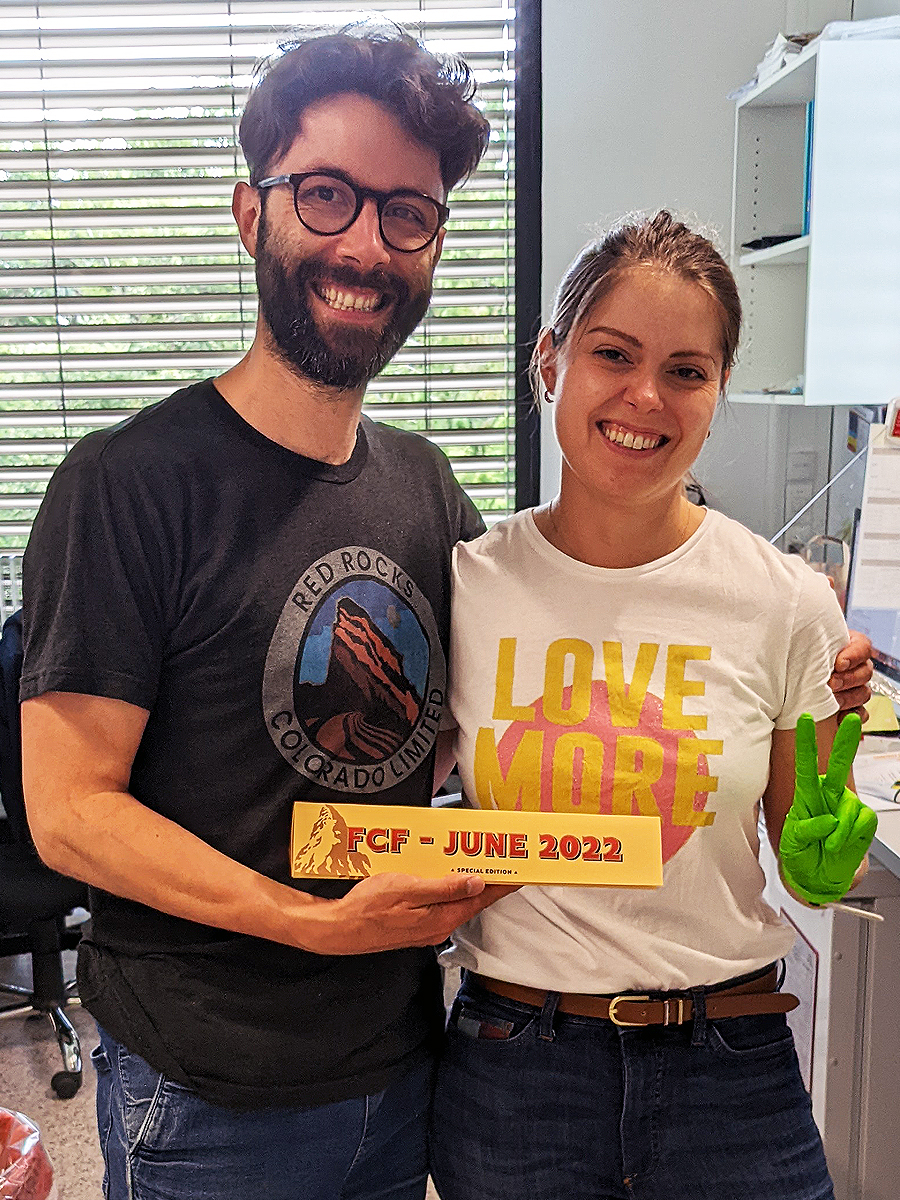|
|

|
|
|
|
|
Facility News
Vacation season is here 🥳! Are you more of a July person (Juilletiste in french) or August person (Aoûtien in french) ? Yes, french people get a unique word for basically everything in the universe. Regardless of your choice, those two months are meant for a break and some resting days. So take the opportunity to disconnect from work !
|
This month, in FACS Tips we are covering some of the innovations that Kevin & Jeff were able to see at the CYTO 2022 Conference in Philadelphia. Maybe one of them will piqued your interest and start a new project ! it is a good time to remind you that you can always ask the FCF Team about experiment ideas and their feasibility. You will be surprise how many reagents and kits exist !
|
|
The June Newsletter Quiz has been won by Stefania Vilbois from the Ho Lab, congratulations !
|
|

|
Finally, I would like to remind everyone that the past FCF Newsletters are always available on the website at this location.
|
|
|
|
FACS Tips
|
CYTO 2022 Recap
CYTO is the annual major conference for flow and imaging cytometry, showcasing the latest developments in equipment, reagents, software and more. This past month Jeff and I attended the first ‘return to an in person’ CYTO in Philadelphia, since Vancouver in 2019. For some background, CYTO is hosted by ISAC, the International Society for Advancement of Cytometry, which has a wonderful website that is a great resource for your flow cytometry questions. On top of publishing Cytometry Part A, they also have a site called CYTO U (for University) with helpful webinars and resources for flow cytometry questions. In this month's newsletter I would like to overview some of the new and interesting technologies presented at the recent conference, that may be of interest to you. As a result of new machine technologies, such as spectral cytometers, with ever increasing numbers of detectors and possible markers to capture, companies are racing to catch up with new dyes to maximize these machines and that is reflected in the first three products listed.
|
Cytek cFluor Dyes
Cytek Bioscience, manufacturer of the Aurora, has developed a range of new reagents under the heading cFluor (ex cFluor YG584) to allow greater expansion and reduce complexity of spectral panels. These antibody conjugates are designed for better use on spectral machines to achieve more unique signals allowing for easier expansion of panels to fit a greater number of markers. They are even providing pre-optimized kits, such as a 14 colour immunoprofiling kit which will ease panel design challenges and get you started with experiments quicker. While not exclusive to spectral machines these antibody conjugates may not be necessary if your conventional dye panels already fit with the conventional single detector analyzers.
|
Thermo Fisher NovaFluor Dyes
|
Originally marketed under the brand Phitonex, Thermo Fisher has begun to release their new group of dyes under the heading NovaFluor (ex NovaFluor Blue 610). These dyes use Phiton technology, which is a fluorophore interwoven into a stable ssDNA structure. The advantage of this is that it allows for custom control of the excitation/emission, spectral signature, and even the brightness. This technology is highlighted as having lower spectral overlap due to narrow emission spectra and minimal cross laser excitation. Much like the Cytek cFluor dyes, these dyes will mostly benefit high parameter panels and spectral analysis predominantly, but may have value to users looking to replace old and less effective dyes in conventional cytometry as well.
|
|

|
https://www.thermofisher.com/ch/en/home/life-science/cell-analysis/flow-cytometry/novafluor-dyes.html
|
|
|
Bio-Rad Star Bright Dyes
Bio-Rad has also released a new group of reagents called StarBright Dyes (ex StarBright Violet 440 Dye). As with the previously mentioned dyes, their aim is to create new reagents that should improve large panels due to increased brightness and reduced spillover. Their proprietary fluorescent nanoparticles have smaller excitation and emission spectrums, and unlike some of the other new reagent products that require special buffer solutions for staining, the StarBright reagents are compatible with all buffers for simplicity.
|
FlowCyte Synthetic Cells
|
The company SlingShot has developed synthetic cells, called FlowCytes, that are in their words “indistinguishable from real cells”. These semi-transparent and granular synthetic cells can be customized to match the biochemical profile and optical properties of your cells of interest. This can eliminate problems in sourcing controls for complicated or rare cellular experiments and also provides consistency in batch to batch experiments. While this could be a very exciting new technology it will be interesting to see how these are implemented in current lab and flow environments.
|
|

|
FlowJo AutoSpill
This FlowJo plugin, quite likely already available to you if you have the most up to date version of FlowJo, is an automated compensation technology. Instead of applying user gated positive and negative populations, AutoSpill works on a robust linear regression approach to calculate spillover. While this sounds complicated, it takes less user input, just create a new compensation on your single stains in FlowJo and select AutoSpill and it will take care of itself. Be cautious though that it can still make mistakes and the auto gates should be reviewed before proceeding. AutoSpill has been shown to create more accurate compensation values than hand gated samples, especially in weakly positive populations. It also can allow you to subtract autofluorescence if you add an extra unused channel to your experiment in DIVA.
|
|

|
See you next year CYTO !
|

|
|
|
|